Snipping corners is a fundamental technique in sewing that might seem like a small detail, but it plays a crucial role in achieving a polished, professional finish.
Whether you’re crafting garments, accessories, or home decor, understanding the significance of this seemingly minor step can make a substantial difference in the overall quality of your projects.
This technique addresses issues of excess fabric, sharp edges, and smooth curves, ensuring your creations not only look impeccable but also fit and drape flawlessly.
In this guide, we’ll delve into the reasons why snipping corners is a valuable skill every sewing enthusiast should master.
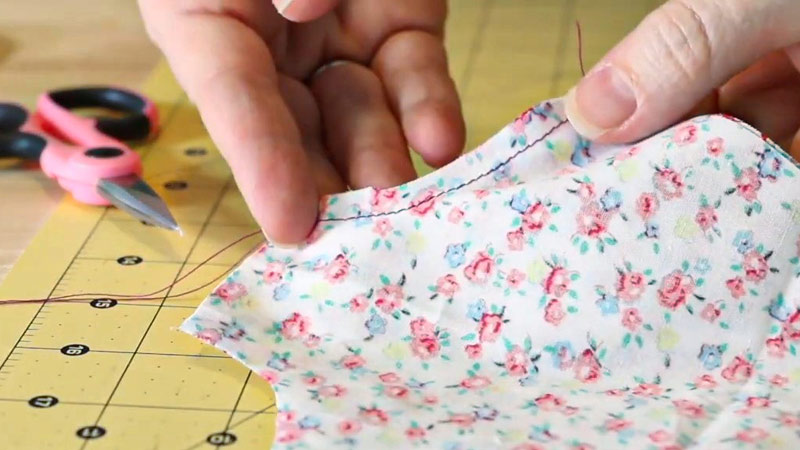
What Is Snipping in Sewing?
In sewing, “snipping” refers to the process of making small, strategic cuts in the fabric at specific points, typically along seam allowances or at corners.
This technique serves to reduce bulk, allowing the fabric to lie flat and create smoother, more defined edges.
Snipping is particularly important in projects with curved or intricate areas, such as collars, pockets, and rounded seams.
It aids in achieving a polished, professional finish. Care must be taken not to cut too close to the stitching to avoid weakening the seam.
The use of pinking shears or small notches with scissors is common for this purpose, depending on the fabric and project at hand.
Why Do I Need to Snip Corners When Sewing?
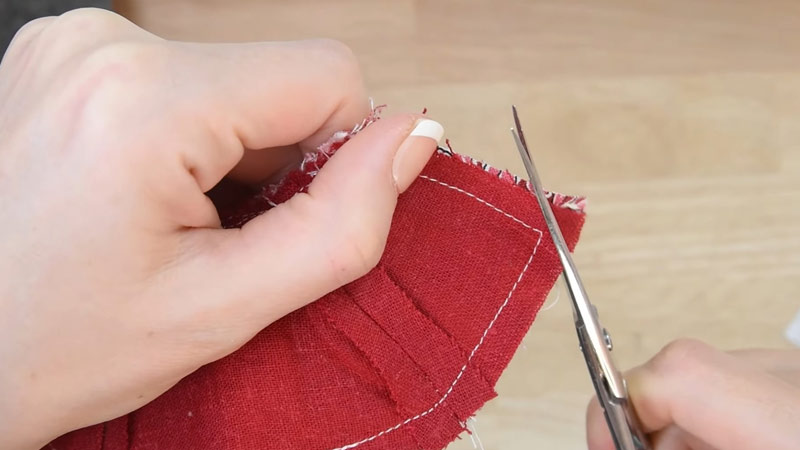
Snipping corners when sewing is an important step in achieving a clean and professional finish for your project.
Here are a few reasons why it’s commonly done:
Reducing Bulk
When sewing, especially with thicker fabrics or multiple layers, excess fabric in the seam allowance can lead to unsightly bulkiness. This can be particularly noticeable at corners.
By carefully snipping the corners, you effectively remove this surplus material.
This reduction in bulk ensures that your finished project maintains a clean, streamlined appearance, without any unnecessary lumps or distortions.
Promoting Sharp
In projects where corners are a prominent feature, such as decorative pillow covers or tailored blouses, achieving sharp, defined edges is crucial.
Snipping allows the fabric to fold precisely at these corners, resulting in a clean and professional finish. This attention to detail can make a significant difference in the overall look and quality of your work.
Enabling Smooth Curves
Working with curved edges requires a delicate touch. Without snipping, excess fabric can gather along the seam allowance, causing unsightly puckering.
By strategically trimming the seam allowance, the fabric can naturally conform to the curve, creating a smooth, wrinkle-free finish.
This is particularly important for projects like rounded collars or circular skirts.
Facilitating Turning of Fabric
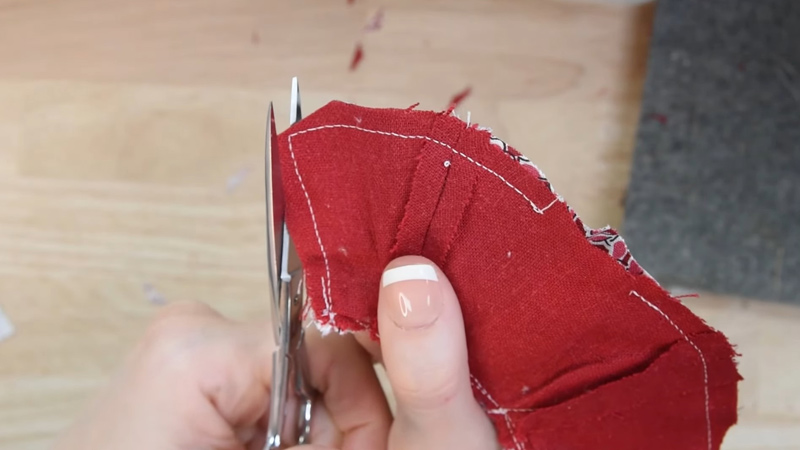
In projects that involve turning the fabric right side out, like plush toys or small bags, snipping corners is essential.
It ensures that the fabric turns easily and lies flat, allowing for a well-defined shape.
Without this step, corners can bunch up, making it difficult to achieve the intended form. Snipping enables a clean and precise result.
Aiding Intersecting Seams
When working on intricate projects like quilting, where multiple seams intersect, snipping is invaluable.
By trimming the seam allowances, the fabric can open up and lay flat at these intersections.
This ensures that the points where seams meet are sharp, well-defined, and free from excess fabric. It contributes to a polished and visually appealing final product.
Preventing Fraying
The edges of the fabric are prone to fraying, especially if they are cut or manipulated during the sewing process. Snipping corners helps alleviate this issue.
By removing excess fabric from the seam allowance, you reduce the likelihood of fraying over time. This is particularly important for fabrics that have a tendency to unravel.
Enhancing Durability
Snipping corners can also contribute to the longevity of your projects.
By reducing bulk and preventing excess stress on the seams, you create a more durable and robust finished product.
This is especially crucial for items that will undergo regular use or laundering.
When Do You Need to Snip Corners?
You should consider snipping corners in sewing when working on projects with areas that have tight curves, corners, or intersecting seams.
Here are specific instances when snipping corners is often necessary:
Corners
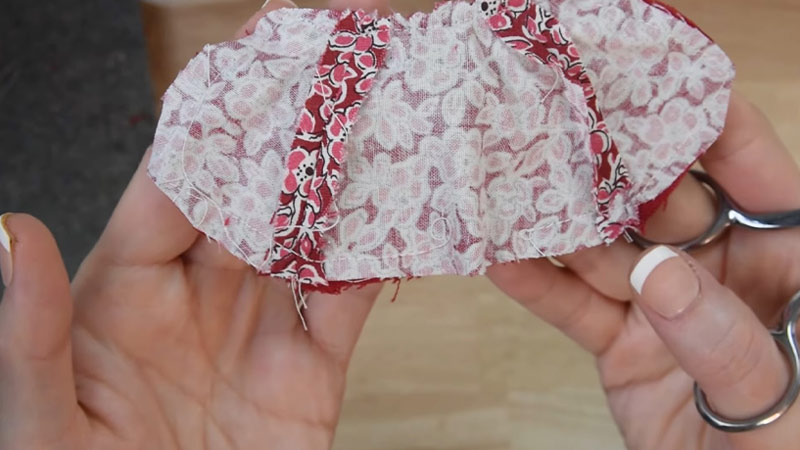
When sewing projects with corners, precision is key. Items like square pillows, tote bags, or collar points require snipping to ensure the corners are clean and well-defined.
This step prevents excess fabric from bunching up, resulting in a professional, polished appearance.
Curves
Curved edges, such as those found in circular skirts, armholes, or rounded collars, demand extra attention.
Snipping allows the fabric to conform smoothly to these curves, preventing puckering or distortion.
This results in a garment that drapes elegantly and feels comfortable to wear.
Intersecting Seams
In quilting or patchwork, precise intersections are crucial for a neat, cohesive look. Snipping allows the fabric to open up at these points, ensuring the quilt blocks align perfectly.
This attention to detail elevates the overall aesthetic of the finished quilt.
Turning Fabric Right Side Out
Projects that involve turning the fabric inside out, like stuffed toys, bags, or lined garments, require snipping.
This step facilitates a smooth turning process, preventing corners from becoming misshapen or bulky. It’s a crucial step for achieving a clean, professional look.
Enhancing Durability
Snipping also contributes to the longevity of your creations. By minimizing excess stress on the seams and reducing bulk, you create a more durable and robust finished product.
This is especially important for items that will be subject to regular use or washing.
Alternatives to Snipping Corners
While snipping corners is a common technique in sewing, there are alternative methods you can use depending on the project and your preferences.
Here are some alternatives:
Trimming Seam
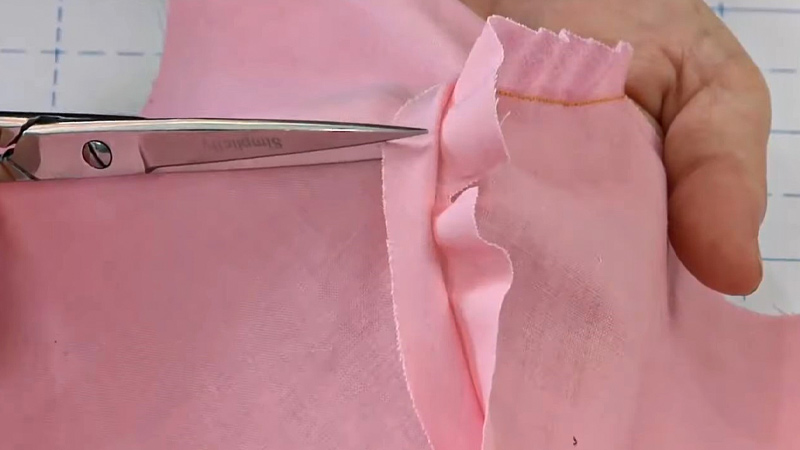
Instead of snipping the corners, you can trim down the seam allowance using scissors, pinking shears, or a rotary cutter. This helps reduce bulk and allows the fabric to lie flatter.
Clipping
Clipping involves making small cuts perpendicular to the seam allowance, rather than directly into the corner. This method is particularly useful for reducing bulk and allowing curves to lie flat.
Notching
Notching involves cutting small V-shaped notches along curved seam allowances. This helps the fabric lie flat when turned right side out, without adding bulk.
Grading Seam
Grading involves trimming down the seam allowances at different levels to reduce bulk.
This is commonly used in areas where there are multiple layers of fabric, such as collars or cuffs.
Binding Seams
Binding involves encasing the seam allowance with bias tape or a similar binding material.
This is especially useful in projects where raw edges need to be concealed, such as with quilts or garments made from delicate fabrics.
Folding
For certain projects, you can make small cuts and then fold the fabric over to create a neat finish.
This works well in situations where you want to create a clean edge without snipping directly into the corner.
Overlocking
If you have access to a serger or overlock machine, you can finish the raw edges of the fabric to prevent fraying.
This can be an alternative to snipping, especially for fabrics that are prone to fraying.
Using Specialty Notions
There are specialty sewing tools available, like corner turning tools or curved seam presses, that can help achieve clean corners and smooth curves without the need for extensive snipping.
FAQS
Why is snipping corners necessary in sewing?
Snipping corners reduces excess fabric, resulting in smoother edges and more defined shapes. It helps prevent bulkiness and ensures a polished finish.
When should I snip corners in my sewing project?
Snip corners when you’re working on projects with corners, curves, or intersecting seams. This includes items like pillows, collars, and quilts.
What happens if I don’t snip corners?
Without snipping, excess fabric can lead to unsightly bunching, especially at corners or along curves. This can affect the overall appearance and fit of the project.
Can I use alternatives to snipping corners?
Yes, alternatives like clipping, trimming seam allowances, or notching can be used depending on the project.
Is snipping corners important for all types of fabric?
Yes, snipping corners is beneficial for all fabric types. It’s particularly crucial for thicker fabrics, as well as delicate materials that may fray easily, to achieve a professional look.
To Wrap Up
The art of snipping corners in sewing proves to be more than just a routine step; it’s a crucial aspect that elevates the craftsmanship of your creations.
By reducing bulk, defining edges, and smoothing curves, this technique ensures your projects possess a level of refinement and professionalism that sets them apart.
Moreover, it contributes to the longevity and durability of your work, making it a skill worth honing.
So, whether you’re fashioning garments, accessories, or home decor, remember that mastering the art of snipping corners is a small yet impactful way to achieve impeccable, well-finished results in your sewing endeavors.
Leave a Reply